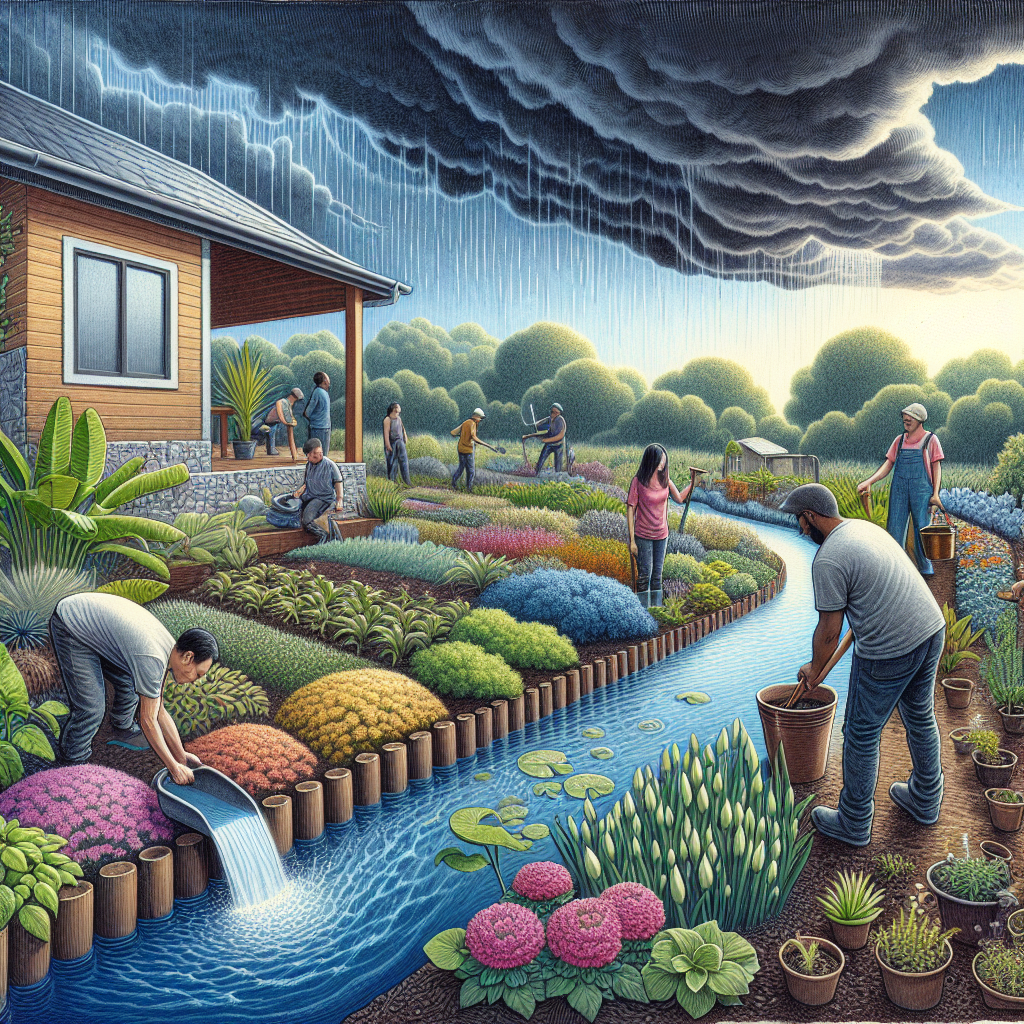Creating a Rain Garden for Water Conservation
Water conservation is an important practice that can help us protect our environment and preserve our natural resources. One effective way to conserve water is by creating a rain garden. A rain garden is a beautiful and functional addition to any landscape, and it can help reduce stormwater runoff and recharge groundwater supplies. In this article, we will guide you through the process of creating your own rain garden, step by step.
Step 1: Choose the Right Location
The first step in creating a rain garden is to choose the right location. Look for an area in your yard that receives a lot of runoff from your roof, driveway, or other impervious surfaces. Ideally, the location should be at least 10 feet away from your home’s foundation to prevent water damage.
Make sure the area you choose has good drainage and is not prone to flooding. Avoid areas with underground utilities or septic systems. It’s also important to consider the amount of sunlight the area receives, as most plants in a rain garden thrive in full sun or partial shade.
Step 2: Determine the Size and Shape
Once you have chosen the location, it’s time to determine the size and shape of your rain garden. The size of your rain garden will depend on the amount of runoff it needs to handle. As a general rule, the garden should be about one-third the size of the impervious area that drains into it.
The shape of your rain garden can be any shape you like, but it should have a shallow depression in the center to collect water. You can use a garden hose or spray paint to outline the shape of your rain garden on the ground.
Step 3: Prepare the Soil
Before you start planting, it’s important to prepare the soil in your rain garden. The soil should be well-drained to prevent water from pooling. If your soil is heavy clay or compacted, you may need to amend it with organic matter, such as compost or peat moss, to improve drainage.
Remove any existing grass or vegetation from the area and loosen the soil with a garden fork or tiller. Remove any rocks, roots, or debris that may interfere with the planting process.
Step 4: Choose the Right Plants
Choosing the right plants for your rain garden is crucial to its success. Native plants are the best choice, as they are adapted to the local climate and require less maintenance. They also provide habitat for native wildlife and help support biodiversity.
When selecting plants, consider their water requirements and tolerance to both wet and dry conditions. Choose a variety of plants with different heights, textures, and bloom times to create visual interest throughout the year.
Some popular choices for rain gardens include black-eyed Susans, purple coneflowers, switchgrass, and cardinal flowers. Check with your local nursery or extension office for a list of recommended plants for your area.
Step 5: Planting and Mulching
Now that you have chosen your plants, it’s time to start planting. Dig holes for each plant, making sure they are deep enough to accommodate the root ball. Place the plants in the holes and backfill with soil, gently firming it around the roots.
After planting, apply a layer of mulch around the plants to help retain moisture and suppress weeds. Organic mulches, such as wood chips or shredded bark, are a good choice for rain gardens.
Step 6: Maintenance and Care
Once your rain garden is planted, it’s important to provide regular maintenance and care to ensure its success. Water the garden regularly, especially during dry periods, to help establish the plants. After the first year, most rain gardens are self-sustaining and require little to no additional watering.
Remove any weeds or invasive plants that may compete with your rain garden plants. Prune the plants as needed to maintain their shape and promote healthy growth. Monitor the garden for signs of erosion or drainage issues and address them promptly.
Step 7: Enjoy Your Rain Garden
Now that your rain garden is complete, it’s time to sit back and enjoy the beauty and benefits it brings. Not only will your rain garden help conserve water and reduce stormwater runoff, but it will also attract butterflies, birds, and other wildlife to your yard.
Take the time to observe and appreciate the changes that occur in your rain garden throughout the seasons. Notice how the plants grow and bloom, and how the garden attracts different species of pollinators and beneficial insects.
Conclusion
Creating a rain garden is a rewarding and environmentally friendly project that can make a significant impact on water conservation. By following the steps outlined in this article, you can create a beautiful and functional rain garden that will not only enhance your landscape but also help protect our precious water resources.
Remember to choose the right location, determine the size and shape, prepare the soil, choose the right plants, plant and mulch, provide regular maintenance and care, and finally, enjoy the fruits of your labor. With a little time and effort, you can create a rain garden that will benefit both you and the environment for years to come.






